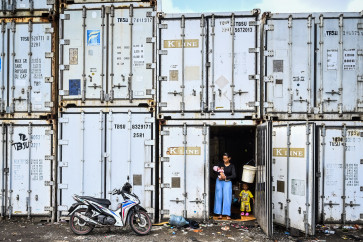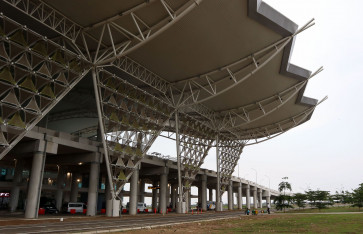Popular Reads
Top Results
Can't find what you're looking for?
View all search resultsPopular Reads
Top Results
Can't find what you're looking for?
View all search resultsWildlife corridor needed to save Javan leopards from extinction: Expert
The worst possible effect of inbreeding could be the species' extinction.
Change text size
Gift Premium Articles
to Anyone
W
ith numerous infrastructure development projects in the pipeline on Java Island and the never-ending expansion of plantations that divide jungles into smaller sections, an environmental expert has highly recommended the creation of "wildlife corridors" to prevent Javan leopards from inbreeding, which often occurs within isolated populations and has detrimental effects.
A researcher at the center for forest research and development from the Environment and Forestry Ministry, Hendra Gunawan, said recently that the worst possible effect of inbreeding could be the species' extinction.
"Therefore, such a wildlife corridor [that could connect one forest to another] is extremely needed," Hendra said last week during the second national conference on Javan leopard in Bogor, West Java.
He argued that parties responsible for the corridor's construction should be those who developed infrastructure projects or plantation areas that had cut off the forests.
He also revealed that the trans-Java toll road, particularly a section stretching from Pemalang regency on the north coast of Central Java to the province capital Semarang, had cut off the critically endangered Javan leopards' habitat. Thus, a green corridor should be constructed over the road.
An example of a wildlife corridor has already been constructed in the Pekanbaru-Dumai section of the trans-Sumatra toll road, coming in the form of five tunnels to allow the migration of the region’s nearly extinct Sumatran elephants.
Hendra further revealed about 50 percent of the Javan leopard's population was spread within industrial forests, which were usually connected to settlement areas and human activities.
"The potential for human-animal conflict is high, and it's alarming," he added.
Meanwhile, Bandung Zoological Garden staff member Asep Heri said the species was often caught in conflicts with humans in the area, whose numbers continue to grow.
He further revealed that he had helped the evacuation process of at least seven Javan leopards from potentially dangerous areas and situations since 1996. The latest happened on June 1 in Cimalingping village, Subang regency, West Java, when he had to anesthetize a leopard stuck under a bedstead in a resident’s home.
The Javan leopard is the last giant cat species living on Java Island after the Javan tiger was declared extinct in the 1980s. The Javan leopard is also known as the black leopard for its dark spots.
According to the Javan Leopard Conservation Forum, only 35 Javan leopards are currently kept in conservation areas across Java Island. They are spread from Ujung Kulon National Park in Banten, the westernmost province of Java, to Alas Purwo National Park on the easternmost side. (vny)
Editor’s note:
This article has been updated with the correct locations of the 35 Javan leopards in Java.










